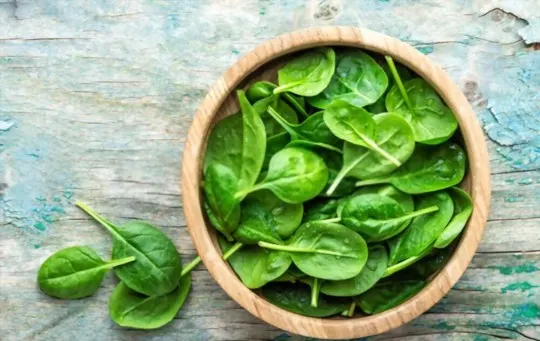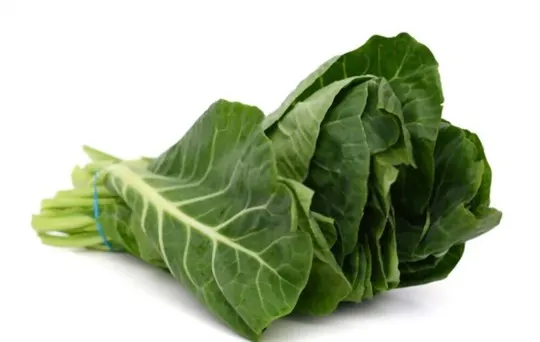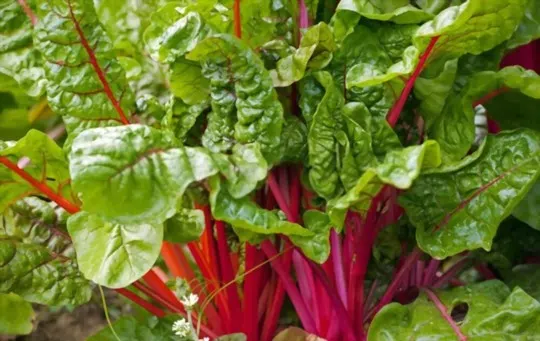Tuscan Kale, also sometimes referred to as Dinosaur Kale or Lacinato Kale, is a hearty, nutritious member of the brassica family that has become increasingly popular in recent years.
It’s known for its rich earthy flavor, long dark green leaves, and chewy texture.
Its popularity is due in part to being featured in dishes by famous chefs including Mario Batali and Jamie Oliver.
While Tuscan kale is widely available year-round in many areas, there may be times when you’re unable to find it for whatever reason.
Fortunately there are several excellent alternatives that can serve as substitutes for Tuscan kale in recipes where it is called for.
We’ll look at some of the best substitutes out there and how they compare to Tuscan kale.
What is Tuscan Kale?

Tuscan kale, also known as Italian kale, black kale, or cavolo nero (its scientific name: Brassica oleracea) is a variety of curly-leaved kale that originates in Italy.
It has deep green leaves with white stems and is a relative of both cabbage and Brussel sprouts.
The flavor is somewhat milder than regular curly kale, with just a hint of bitterness, so it’s often chosen because it takes well to a variety of flavors.
Tuscan kale can be eaten raw in salads or cooked in soups, pastas and stir-fries.
Its low calorie count makes it an ideal ingredient to add to dishes for flavor while providing some nutritional benefits.
This leafy green vegetable contains antioxidants such as carotenoids that can help lower the risk of cancer and heart disease.
It also provides vitamins A and C, folate and dietary fiber.
How to Cook and Use Tuscan Kale?
Tuscan Kale is an Italian kale variety known as cavolo nero, dinosaur kale, lacinato kale, or black cabbage.
With its deep green and nearly blue-green coloring and bumpy roll-like leaves, it has a unique texture and flavor.
Its flavor is earthier when compared to other types of kales.
It has a mild bitterness that can be sweetened with honey or caramelized to enhance the flavor further.
The leaves are tougher than other types of kale varieties so it takes longer to cook and can require pre-cooking with tougher stems removed before being added to salads or used as part of a main dish.
Cooking Tuscan Kale: When cooking Tuscan kale, simmer it in boiling salted water for a few minutes on medium heat until the leaves are soft.
The leaves can then be added to soups or curries or fried with olive oil and garlic for flavoring.
Some people also like braising tuscan kale in stock and adding it to dishes such as pizza or ravioli filling.
To reduce cooking time even more, you can chop this type of kale into small pieces before adding it to your meal or you can even put the entire leaf in your blender so that it marinates in your soup while simmering slowly over medium heat for about 10 minutes.
This method helps retain some of its nutrients and greatly reduces cooking time without compromising taste when compared to regular cooking methods for this type of green leafy vegetable.
When using Tuscan Kale raw (such as adding the leaves into salads), make sure to massage the leaves with salt water prior too eating as this helps soften them quickly, resulting in easier digestion.
5 Best Tuscan Kale Substitutes to Consider
However, the availability of this vegetable is limited to certain regions, which makes it difficult to find in some places.
Although stores may carry Tuscan kale from time to time, it might not always be available when you need it.
Fortunately, there are some good substitutes that can be used if Tuscan kale is not available.
1 – Baby Spinach Leaves

Baby spinach leaves are a great replacement for Tuscan kale in soups and side dishes, as they have a similar texture and flavor.
In terms of nutrition, baby spinach offers iron and calcium, which can’t be found in Tuscan kale.
It also has more vitamin A, vitamin K, magnesium, potassium and folic acid than Tuscan kale.
If you’re looking for an easy-to-use substitute for Tuscan kale in salads or sandwiches, baby spinach is ideal due to its mild flavor and tender leaves.
2 – Collard Greens

Collard greens are a great substitute for Tuscan kale.
They are one of the oldest crops cultivated by humans and have been found in many forms throughout history.
Collards have a mild flavor that is similar to Tuscan kale and they can be prepared in many of the same ways.
When they are cooked, they become tender and mellow, making them a perfect substitute for Tuscan kale recipes.
Collard greens contain calcium, fiber, vitamins A, C and K as well as folate and other minerals.
They can also help reduce cholesterol levels when eaten regularly.
To prepare collard greens, rinse them thoroughly to remove any dirt or pests before steaming for about ½ hour or cooking with other ingredients like bacon or oniohns in soups or stews.
3 – Swiss Chard

Swiss chard is a leafy green with tender stems, stalks and veins, making it a great alternative to Tuscan kale.
It comes in different varieties, with vibrant and colorful stems that can range from yellow to magenta.
Swiss chard has an earthy, mildly sweet flavor and can easily substitute for Tuscan kale in any dish.
It also has a slightly sweeter taste than kale and requires slightly less time to cook due to its softer texture.
To use Swiss chard as a substitute for Tuscan kale, simply add it during the last few minutes of cooking since it quickly wilts without overcooking.
4 – Mustard Greens

Mustard Greens are widely available and have a versatile flavor profile, so they’re a great alternative to Tuscan kale.
They have a similar texture to kale, with tender leaves and crunchy stems.
The flavor of mustard greens varies across different varieties, but in general you can expect sweet, peppery flavors.
They’re also low in carbs and calories – and high in vitamins A, C and K.
When preparing mustard greens as an alternative to Tuscan kale, you can substitute them in any dish that requires cooking – like stir fries or soups.
As with other leafy greens, they should be washed thoroughly before cooking to remove any dirt or debris.
Mustard greens are best served cooked with olive oil, garlic or onions for added flavor.
5 – Chinese Broccoli

Chinese Broccoli (Gai Lan) is one of the most popular Tuscan Kale substitutes.
It has a mild taste and crunchy texture.
Chinese broccoli is part of the cruciferous vegetable family, similar to broccoli, kale, and Brussel sprouts.
It’s leaves and stems have a slightly sweeter taste than regular broccoli, with a crispier texture.
It’s great for stir-fries and can also be cooked or steamed like other vegetables, making it incredibly versatile.
Chinese Broccoli makes a tasty addition to salads and soups as well.
Try adding it to your favorite Italian dishes for an extra kick.
Conclusion
When it comes to finding a good substitute for Tuscan kale, it’s important to keep in mind the flavor, texture and color of the original ingredient.
Spinach can work as a base for most dishes, but you may find that chard has a more pleasant flavor and texture.
Collard greens can also great when cooked with traditional Italian flavors like garlic and olive oil.
Kale is becoming increasingly popular, so don’t be afraid to experiment with different combinations of flavors.
Lastly, mustard greens are an ideal last resort if all else fails.
Remember, the perfect substitute depends on tastes and preferences.
No matter what you choose when selecting a substitute for Tuscan kale, don’t forget to have fun in the kitchen and enjoy the adventure of discovering something new.
Frequently Asked Questions
What is Tuscan Kale?
Tuscan kale, also known as cavolo nero, is a leafy green vegetable that belongs to the cabbage family.
It has a slightly bitter taste and is commonly used in Italian dishes.
What are the 5 best substitutes for Tuscan kale?
The 5 best substitutes for Tuscan kale are collard greens, Swiss chard, spinach, mustard greens, and turnip greens.

5 Best Tuscan Kale Substitutes to Consider
Ingredients
- 1 – Baby Spinach Leaves
- 2 – Collard Greens
- 3 – Swiss Chard
- 4 – Mustard Greens
- 5 – Chinese Broccoli
Instructions
- Choose your preferred substitute from the list of options.
- Organize all of your ingredients.
- Use the proper substitute to cook your recipes.

Carrie is a food writer and editor with more than 15 years of experience. She has worked for some of the biggest names in the food industry, including Bon Appétit, Food & Wine, and Martha Stewart Living.
As the Editor in Chief of IntroChicago.com, Carrie oversees all of the content on the site. She also manages the team of contributing writers and editors, who help to create delicious recipes, helpful tips, and informative articles that you’ll find on the site.
A native of the Chicago area, Carrie is passionate about all things food. She loves trying new restaurants and experimenting with new recipes in her kitchen. She’s also a graduate of the Culinary Institute of America, so she knows a thing or two about food!
